Genesis GV70 Vs BMW X3 Comparison: Compact Luxury Face-Off

If there’s one car that’s clearly in the sights of the Genesis GV70, it’s the BMW X3.
BMW has made bank with its compact crossover. At the end of 2021, the X3 had extended its lead over the segment, selling 75,858 units in the US. The closest competitor, the Audi Q5, sold four-fifths that total. It’s not hard to see why the X3 does so well: it blends the brand’s sporty reputation with the shape the market demands, and at the right size. It also comes in a variety of flavors—we called the mid-level X3 M40i the “Goldilocks” of the range recently, and that same car is the one we’ve brought to face the newcomer today.
By comparison, the entire Genesis brand sold fewer units than BMW shifted X3s. But sales tripled over 2020, and a large part of that growth came from the brand’s GV70. It arrives in a red-hot segment free from the shackles of decades of brand history. Striking design inside and out, a laundry list of tech, and fuss-free pricing are just some of the reasons we said the GV70 “ deserves to be on your compact SUV shortlist.”
Get a Quote on a New BMW X3 or Genesis GV70It’s seen off a Porsche Macan, but how will the GV70 fare against the segment leader? Let’s find out.
Interior and Cargo Space
GV70: The GV70 interior is all about texture. The contrast of the smooth leather and the intricate diamond stitching found on the seats. A pinstripe of metal wrapping around the cabin, a part of the hidden air vents, plays off the chunky rotary dials in the center console. Soft ambient light glows from the doors and dashboard. Overall the cabin design is minimal, and it allows the quality materials do the talking.
The blue leather is an adventurous choice, especially with the red stitching and seatbelts. It works, better than the carbon fiber trim stamped onto the armrests. Sport models like this tester also throw in a three-spoke steering wheel. It doesn’t feel appreciably different from the two-spoker, but it does look better.
Those quilted leather seats are comfortable and supportive, with a wide range of back and lower leg adjustment. Even in their highest position, they feel closer to the ground than the ones in the X3—whether that’s a good or bad thing is a matter of taste. Visibility is generally good, except the sizeable blind spot created by that tiny rear quarter-window.
Headroom is generous in both rows, clocking in at 39.6 and 39.1 inches (1,0006 and 994 mm), front and back. Genesis says the 37.2 inches (945 mm) of rear legroom is a segment best, and it’s enough to allow for adults to get comfy back there. The rear seats themselves are decently comfortable, too. The raised middle seat does mean the shortest people should be slotted there, however. Extra points for front-seat adjustments accessible on the backside of the passenger seat, too.
Pop that stylishly chopped liftgate and you’ll find 28.9 cubic feet (818 liters) of storage space. Folding the 60/40 second-row swells that figure to 56.9 cubes (1,611 L). Properly equipped, the GV70 is rated to tow up to 3,500 lb (1,588 kg).
X3: BMW is like the local brewery with a lineup of all IPAs; it’s found what works, and sticks to it. The X3 interior is similar to every modern BMW interior, majoring on strong ergonomics. The dashboard design keeps all the important radio and climate controls centralized, with real buttons no less. The disconnect between the design of the dash and door panels means the X3 lacks that enveloping feel of the G70’s cabin.
Material quality is all very high, especially the rich red leather of this tester. The wheel sticks to black hide, and it typical M fashion, it’s laughably over-thick.
The red seats look good, but as I mentioned in my solo X3 M40i review, on longer trips they left my lower back sore. There are lots of adjustments too, so perhaps your mileage may vary. Like the GV70, these are heated, but they miss out on the ventilation—it’s on the options list. Visibility is excellent all-around.
According to BMW, the headroom is a massive 41.1 inches (1,044 mm) up front, and 38.5 inches (978) in the the second row. On both counts, it feels much closer to the GV70 than the numbers suggest. Same goes for the legroom: 40.3 inches (1,024 mm) is plenty up front. The back row sacrifices less than an inch (36.4 inches / 925 mm), keeping it feeling spacious for adults. The X3’s back row is around an inch narrower, though. On the flip side, its middle seat doesn’t puff up as much as the one in the GV70.
Trunk space is neck-and-neck. While the X3 has the more upright shape, its trunk will swallow 28.7 cubic feet (812 liters) of stuff, a hair less than the GV70. Its load floor is nice and low, though. The useful 40/20/40 second row can drop flat to net the X3 the extended storage win, with 62.7 cubes (1,775 L) of space.
SEE ALSO: Genesis GV70 vs Porsche Macan ComparisonBottom Line: The shield grille of the GV70 inches ahead in this first category. Ease of use matters, and the BMW excels there. The GV70 simply feels more special and spacious, and together, those factors more than make up for it.
Tech and Features
GV70: Every single GV70 comes with the brand’s 14.5-inch touchscreen. It’s an easy setup to use thanks to the sheer real estate and easy-to-read tile system. That said, those with shorter arms will want to stick to the redundant rotary dial in the center console. It makes menu navigation simple. If only it didn’t feel practically identical to the drive selector—it was a mix-up both photographer Harry and I made a few times during the week. Bring over the cool click wheel in the GV80, Genesis!
The instrument panel uses the same convincing 3D projection tech as the one in the GV80. If you don’t like it, you can simply switch it off. I find it works well, especially with centering important info like the adaptive cruise status. A head-up display helps further, floating lots of relevant info just above the hood line.
The digital instrument panel also allows for Genesis’ clever Blind-View Monitor, which replaces a dial with a live camera feed whenever a turn signal is active. It’s a good extra set of eyes, especially given that chunky D-pillar. A 360-degree camera with multiple “third person” angles makes it all too easy to park on your own—or just use the automatic park assist.
There are USB ports scattered in both rows of the GV70. Frustratingly, they’re all USB-A. You better bring your wires, too: while Apple CarPlay and Android Auto are standard, they need the leash. The 18-speaker Lexicon sound system is also fan-freaking-tastic, with plenty of power and a wide range.
X3: BMW also goes ultra-widescreen for its main touch interface, measuring 12.3 inches across. iDrive 7.0 isn’t the brand’s newest operating system, but it’s still sharp and fast. The shortcuts available on the left and top of the screen make it easy to flit between menus—which is good, because iDrive still does feature too many sub-menus, so it’s possible to get lost. Apple CarPlay and Android Auto are of course standard, but they’re both wireless. That counts for a lot in a luxury setting: nothing quite ruins the GV70’s carefully crafted aesthetic like a white cord dangling around the center console. There’s a wireless charge pad, too. If you do need to plug in, both types of ports are present, in front row and back.
Like the Genesis, the BMW uses a second screen ahead of the driver. It only operates in two dimensions, not three, but it’s crisp and informative nonetheless. There’s lots of customization available, including a particularly detailed adaptive cruise control screen that accurately mirrors surrounding traffic and lane placement. What’s more, the IP and head-up display can pull nav information not just from the native system, but from Apple Maps. That means you can just ask Siri for directions.
Speaking of voice assistants, “Hey BMW” works very well, responding to requests accurately. It’s not over-eager either, so you can say “keys and bubblegum” as often as you want. Uh, if that’s something you do regularly.
A 360-degree camera features a bright, high-res feed, and can offer up multiple angles like the GV70. The Harman/Kardon sound system is good, but audiophiles will prefer the richer Lexicon setup.
SEE ALSO: 2022 BMW X3 M40i Review: From Strength to StrengthBottom Line: The GV70 no doubt packs in more tech, with plenty of unique features. Some, like Blind-View Monitor, are hugely useful. Others, like the 3D instrument panel, are less so. The BMW makes the most of what it has though, with a user interface that’s better suited to its redundant physical controls. Plus, its voice activation is smooth. We didn’t think it would play out this way at the beginning of the week, but by the end, it was the BMW’s tech ecosystem we preferred.
Powertrain, Driving Feel, and Fuel Economy
GV70: Genesis currently offers two turbocharged engines in the GV70. Like its 80-series siblings, these consist of a 2.5-liter four-cylinder, and 3.5-liter V6. Both send their power through an eight-speed auto, to a rear-biased all-wheel drive system. An electrified model will arrive … soon-ish.
This Sport Plus tester uses the larger engine, good for 375 horsepower and 391 pound-feet of torque. It’s sharper than the last 3.5T we tested in the bigger GV80, reacting quickly to big-toe flexes.That’s just in Normal, too; swap over to Sport and throttle response is even better. It’s an engine defined by its ample torque curve; it’s more of a plateau really, so there’s little reason to explore the upper reaches of the tachometer. The eight-speed auto fills an excellent support role: like the right font in a good book, its notable for how seamlessly it blends in.
The GV70 generally rides well. You’re never unaware of the unsprung weight those big 21-inch wheels provide, but that manifests itself more on turn-in than over rough surfaces. The GV70 never gets crashy, though Sport Plus makes it unnecessarily harsh. That stylish body stays relatively flat through corners too, and the cabin is correspondingly calm. The steering has a solid, consistent amount of weight in Normal, and switching to Sport mode finds the sweet spot. Point the GV70 down a twisty stretch of tarmac and it’s clear the AWD system is rear-biased. The electronic LSD keeps things tidy by ensuring power makes it to the road.
Fuel economy is not the GV70’s strong suit. Its numbers are 19 mpg city and 25 mpg highway, for a 21 mpg average. Canadian figures are 12.9, 10.0, and 11.6 L/100 km, respectively.
X3: BMW offers more flavors of the X3 than most other compact SUVs. The basic model uses the brand’s 2.0-liter four-cylinder turbo, and comes in either rear-drive (sDrive) or all-wheel-drive (xDrive) formats. At the other end of the lineup is the X3 M, which produces up to 503 hp in the wicked-quick Competition trim. In the middle sits this M40i, which also uses a 3.0-liter turbocharged inline-six, but in a less manic state of tune. The important figures are 382 hp and 369 lb-ft, routed through a transmission with as many cogs as the Genesis’.
(Canada also still gets the very good X3 plug-in hybrid, but the US passed on it for 2022.)
When the world has made the transition to all EVs, we’d like to think historians will look back on this engine with reverence. It’s a marvel: free-revving in the way few turbocharged motors are, it rips towards redline with gusto. Even so, torque comes on early and sticks around, so the X3 gives you options on how to proceed: quickly, or very quickly. We don’t have any timing gear, but rough estimates suggest the X3 has a solid half-second or more advantage on the sprint up to highway speed. The inline-six also features a silky-smooth soundtrack; gun it in a sportier drive mode and little burps punctuate the song on shifts.
Manufacturer spec pages suggest these two are nearly the same weight. The GV70 feels like it’s carrying another person, though; the X3 turns in quickly, its steering weighting up nicely as soon as any lock is applied. That’s just in its default mode, too: switching to Sport adds more heft, should you want it. It’s certainly the more fun SUV should you find yourself in a place to stretch its legs. That doesn’t turn it into a pain around town or on the highway, either. Smart damping means bumps are more heard than felt, and the X3 quickly settles after it encounters them. The German compact always feels secure, building driver confidence.
(Editor’s note: this X3’s build sheet lists 21-inch wheels, but as it’s rolling on winter rubber, BMW fit 20s instead.)
More good news: the X3 sips fuel. EPA figures are 21 mpg city, 26 mpg highway, and 23 mpg combined. (Canadian equivalents are 11.3, 8.7, and 10.1 L/100, respectively). More than that, we found it very easy to produce even better figures in the X3, whereas the GV70 always struggled to match its numbers.
Bottom Line: BMW has essentially perfected the turbocharged inline-six. It’s a gem of an engine, flexible and practically lag-free. Paired with an athletic chassis that urges the driver to have some fun—but crucially, never punishes them when they’re not in the mood—it’s a tough act to follow, this X3 M40i. Follow is what the GV70 does in this category though; it’s comparatively hefty and lethargic.
Styling
GV70: The GV70 cuts a dramatic profile, with a steeply-raked tailgate and that low nose. It’s one of the largest vehicles in the class, but Genesis’ stylists have made it look smaller. The twin-line motif unifies the whole Genesis family, but the subtle tweaks here, like the pointed inner edges of the headlights and the convex tailgate, give the GV70 its own distinct flavor. Sport models up the aggression with bigger air intakes up front and two big exhaust tips poking out of a redesigned rear valance. The 21-inch wheels positively fill the arches, and while they look cool, I feel bad for whoever has to regularly clean them.
X3: The X3 is very much a same-sausage-different-lengths kind of BMW. The 2022 changes have made it more distinctive within the BMW lineup, which is something it needed. It’s still a little hard to tell apart up front, but the unique taillight LED signature, with their futuristic-salad-tongs shape, sure help. The M40i brings in just the right amount of aggression in the form of blacked-out trim and pretty 20-inch wheels.
Bottom Line: Obviously the X3 has its fans, what with it being the best-selling model in the class and all. That ubiquity does cause it to blend into the background, though. If making a statement is your thing, nothing else in the segment will do it as loudly as the GV70. It looks expensive, but we’ll see how well that styling ages in a few years.
SEE ALSO: Genesis GV80 vs BMW X5 Comparison: The Luxury ArgumentPricing and Value
GV70: $42,595 ($49,500 CAD), including destination is what it’ll cost you to get behind the wheel of the lowest GV70 trim. This 2.5-liter-powered model comes with AWD, 18-inch alloy wheels, LED exterior lighting, and a powered tailgate. The 14.5-inch touchscreen is standard too, as are the wireless charger, fingerprint scanner, and heated front seats.
V6 models kick off at $54,195 ($69,000 CAD). This Sport Plus tester represents the top of the range, with a corresponding $64,095 ($76,000 CAD) price tag. That does include a whole bunch of interior goodies—3D instrument panel, 18-speaker Lexicon sound system, head-up display, ventilated front seats and heated rears, and a suede headliner.
X3: Getting into an X3 means the sDrive30i model, a rear-drive SUV powered by the ubiquitous BMW 2.0-liter. Its going rate is $44,695. Add $2,000 for xDrive, which is the only option in the Great White North ($55,470 CAD). Like the Genesis, you’ll find 18-inch wheels, LED exterior lighting, and a powered tailgate here.
The M40i model is, also like the Genesis, an AWD-only affair. It starts at $58,795 ($69,470 CAD), including destination. Our Canadian-spec tester piles on top of that with things like the fancy red merino leather interior, and a $7,900 CAD Premium Package Enhanced. Admittedly, that adds a lot of the equipment that makes it comparable to the GV70, like the second-row sunshades, head-up display, HK sound system, ambient lighting, pano roof, and more. All of its options add up to an $86,815 CAD tester; no perfect US-market equivalent exists, but you’re looking at around $72,000.
Bottom Line: If you’re shocked a Genesis undercuts its main rival, have I got a surprise for you about the color of the sky. Still, an $8,000 ($10,000 CAD) difference is a serious gap at this price point. If the gap were half that size, the GV70 would still feel like the better value. As is, then, it’s another huge win for the GV70.
SEE ALSO: 2022 Lexus NX 450h+ First Drive Review: Plugged-In ProgressVerdict: Genesis GV70 vs BMW X3 Comparison
This back-and-forth slug fest has gone the whole 12 rounds. At the end, both the BMW X3 and Genesis GV70 have scored a few big hits, but no decisive knockout. In the red corner, the Korean upstart wins big on style, both inside and out: it’s the prettier, more spacious place to spend time. Considering it’s fully loaded and the BMW still has left options boxes unticked, the value angle can’t be ignored, either. Those savings would buy a very nice family vacation.
The contestant in the gray can’t be counted out, though. The X3 is the driver’s choice here, featuring a killer powertrain and superior steering. It’s barely less spacious, and while it doesn’t feature the whiz-bang tech of the newcomer, what it does have is super refined. Sure, it’s pricier, but as the old saying goes: you get what you pay for. And in this case, you’d be paying for the best version of the best vehicle in the class.
Become an AutoGuide insider. Get the latest from the automotive world first by subscribing to our newsletter here.

Kyle began his automotive obsession before he even started school, courtesy of a remote control Porsche and various LEGO sets. He later studied advertising and graphic design at Humber College, which led him to writing about cars (both real and digital). He is now a proud member of the Automobile Journalists Association of Canada (AJAC), where he was the Journalist of the Year runner-up for 2021.
More by Kyle Patrick




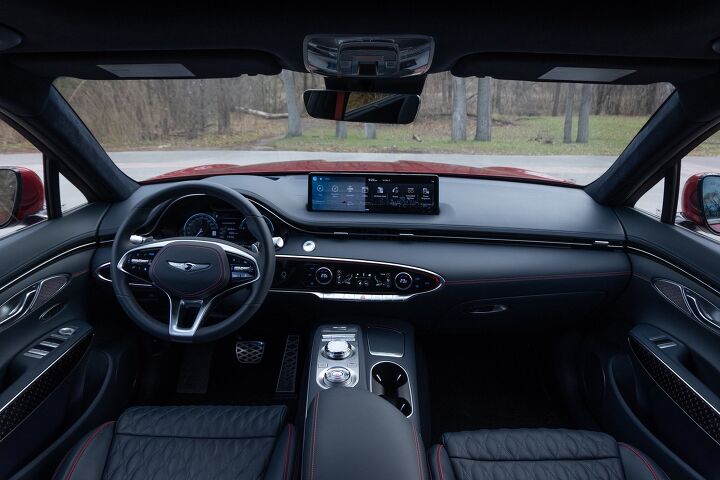

















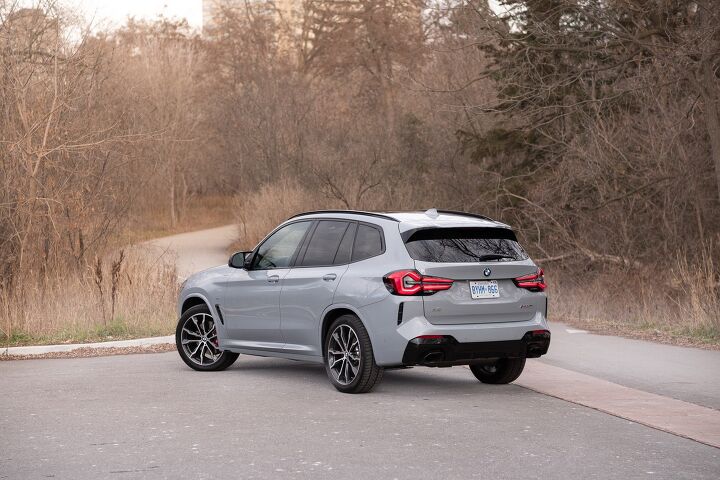














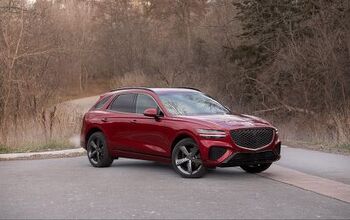
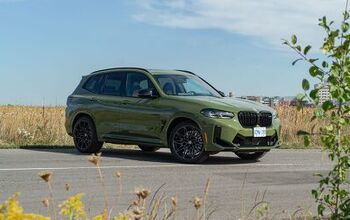

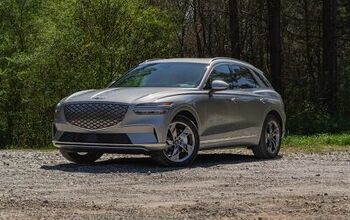



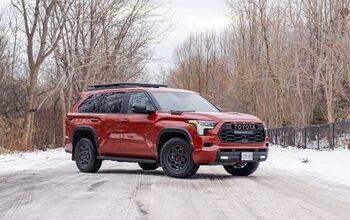
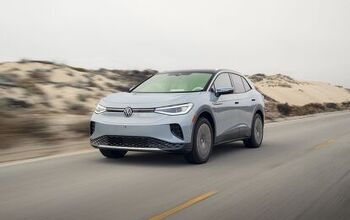






Comments
Join the conversation